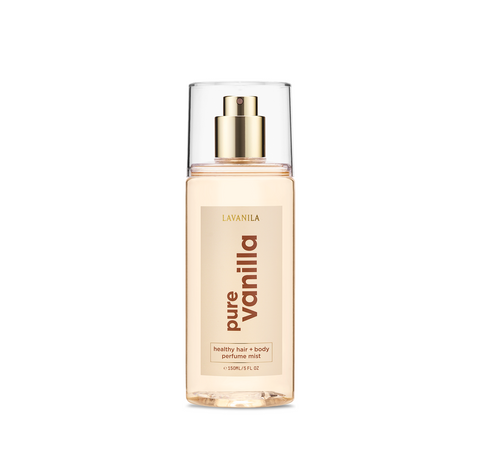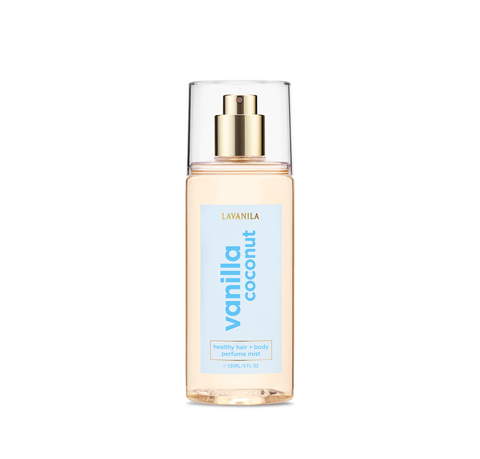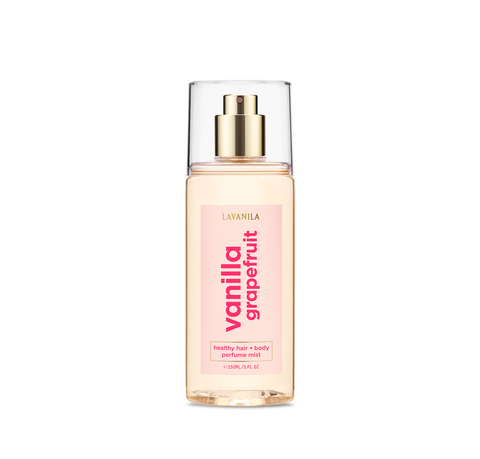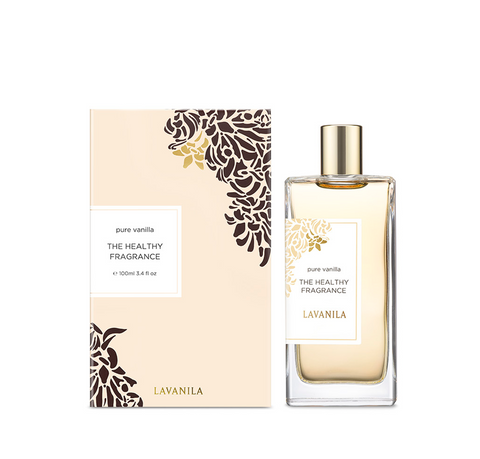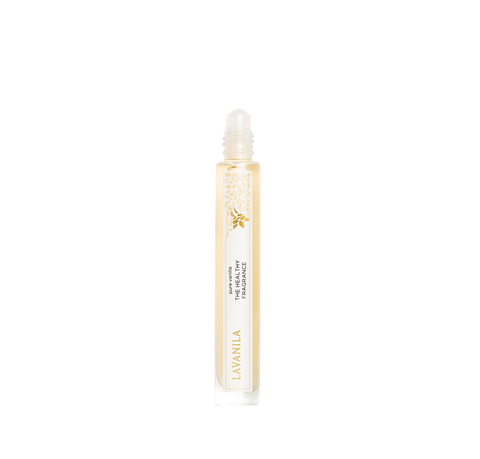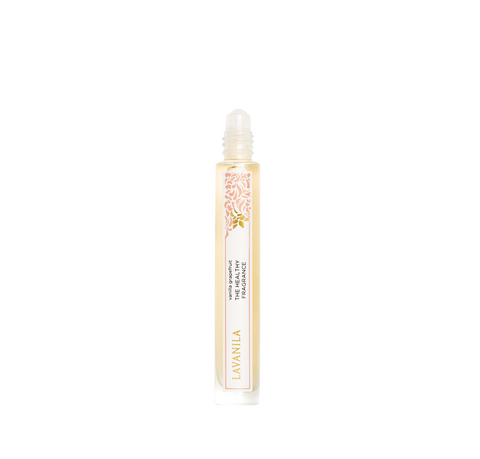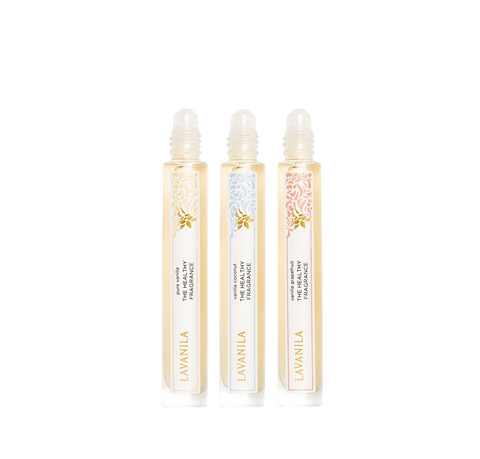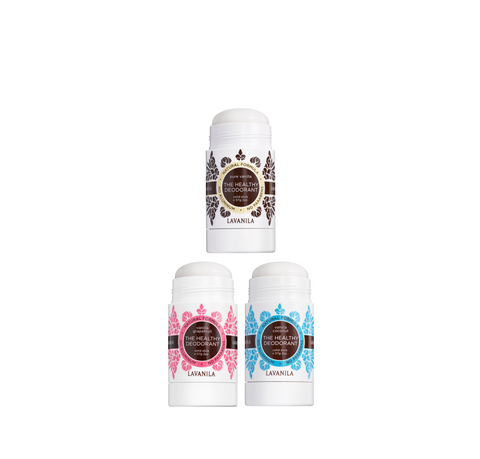People hunting for the most toxic perfumes list and the top 10 most toxic perfumes list do so because scent is personal — and sometimes dangerous. Right away: many shoppers don’t realize that a beautiful bottle can hide dozens of chemicals. The “most toxic perfumes list” helps readers spot patterns and choose safer options. The top 10 most toxic perfumes list isn’t just a curiosity piece; it’s a guide to understanding which ingredients and scent technologies tend to cause the most harm. Knowing the signs can protect skin, reduce headaches and respiratory reactions, and make it easier to choose clean, natural alternatives.
What makes a perfume “toxic”?
Perfume becomes “toxic” in everyday use when it contains ingredients that commonly irritate skin, alter hormones, persist in the environment, or produce harmful breakdown products in indoor air. A product doesn’t need to contain only dangerous chemicals to be risky; a single high-risk ingredient or a mix of many low-risk ones can add up. When people search for the most toxic perfumes list, they’re trying to identify these recurring red flags so they can avoid scents that do more harm than good.
Common chemicals found in conventional perfumes
Several groups of ingredients show up repeatedly on lists of problematic fragrances. These are the kinds of materials that often land a scent on a most toxic perfumes list:
-
Synthetic musks: used as fixatives to make scent last longer.
-
Phthalates: used to help fragrance adhere to skin and fabric.
-
Aldehydes and certain nitroaromatic compounds: powerful scent boosters that can irritate.
-
Petrolatum-derivatives or heavy solvents: sometimes used as carriers.
-
Unspecified “fragrance” or “parfum”: a legal umbrella that can hide dozens of raw materials.
Many perfume labels use the word “fragrance” so consumers can’t see the full list of raw materials. That opacity is a big reason the top 10 most toxic perfumes list matters: it looks for recurring chemical patterns, not just brand names.
How these ingredients affect skin and health
Different chemicals cause different problems. Some trigger immediate skin irritation — redness, itch, or contact dermatitis. Others act on the respiratory system, causing sneezing or headaches in sensitive people. A few groups of molecules raise longer-term concerns in scientific studies, such as hormone activity or environmental persistence. That mix of short-term and long-term effects is why a most toxic perfumes list often ranks products not only by acute irritation reports but by the presence of certain chemical groups that science flags repeatedly.
15% Discount on Your First Order
Subscribe for exclusive sales and promo codes
- Enjoy a 15% discount on your first purchase
- Be the first to know about our special sales and promotions
- Receive unique promo codes available only to our subscribers
The Top 10 Most Toxic Perfumes List
Below you’ll find the kinds of perfumes that most often appear on a most toxic perfumes list. Rather than naming brands, this format explains why a product falls into the top 10 most toxic perfumes list so you can spot similar products anywhere.
Perfume Known for Heavy Synthetic Musks
Perfumes that rely on heavy synthetic musks for long-lasting base notes often show up on the most toxic perfumes list. These musks can be slow to break down in the environment and have been linked in some studies to bioaccumulation. On skin, they may cause delayed contact reactions in people who are sensitive. A scent anchored by several synthetic musks can smell smooth and persistent — and also carry a higher likelihood of irritation or environmental persistence.
Perfume with Strong Phthalate Content
When a scent formulation depends on phthalates to extend longevity, it’s a common candidate for the top 10 most toxic perfumes list. Phthalates have been used in perfumery to help scent bind to materials and skin, but some phthalates have attracted regulatory and health scrutiny for endocrine activity in lab studies. Perfumes with obvious phthalate usage tend to score poorly on toxicity lists because the compound class shows up repeatedly in safety reviews.
Perfume Tied to Headache Triggers
Certain high-impact aroma molecules or concentrated aldehyde blends can trigger headaches or migraines in sensitive people. Perfumes built on these potent top notes — designed to be immediately striking and attention-grabbing — frequently appear on lists of problematic fragrances. The top 10 most toxic perfumes list usually flags these because they correlate strongly with reported headache complaints and indoor air irritation.
Perfume with Aggressive Chemical Fixatives
Fixatives keep scent round for hours, but some chemical fixatives are harsh. Perfumes that use aggressive, poorly disclosed fixatives are typical entries on a most toxic perfumes list. These compounds can be sensory irritants and sometimes persist in dust or fabrics, which prolongs exposure. When a product’s ingredient detail is vague about its fixative system, that alone is a reason to treat it with caution.
Perfume Linked to Skin Sensitivities
Some perfumes have a history of producing allergic contact dermatitis or chronic irritation for users. These scents often include known sensitizers at concentrations that trigger reactions, especially after repeated use. Perfumes that appear often in complaint databases or dermatology reports become perennial inclusions on a top 10 most toxic perfumes list because the human evidence is clear: repeated exposure caused problems for enough people to merit concern.
Perfume with Petroleum-Derived Ingredients
Perfumes that rely heavily on petroleum-derived solvents or petroleum-based aroma chemicals can be problematic. These materials sometimes increase the chance of irritation and can carry environmental persistence concerns. When a scent’s base relies on petroleum derivatives, it’s commonly marked down on toxicity rankings that prioritize biodegradability and skin safety.
Perfume Featuring Harsh Aldehydes
Aldehydes can make a perfume feel bright and clean, but certain aldehydes are notorious irritants at higher concentrations. Perfumes built around hard aldehydic notes — the so-called “clean” or “soapy” signatures — may be flagged on a most toxic perfumes list because they can cause immediate eye, nose, or skin irritation in sensitive users.
Perfume Notorious for Long-Lasting Synthetic Notes
Long-lasting synthetic notes that do not readily evaporate are prized in perfumery for sillage and staying power. Those same properties make them more visible on toxicity lists. Products containing multiple slow-evaporating synthetics tend to stick around in indoor dust and air, which increases cumulative exposure and the chance of delayed reactions.
 Lavanila’s aloe-based mists offer a clean, gentle way to adapt with the seasons while nourishing your hair and uplifting your senses all year long.
Lavanila’s aloe-based mists offer a clean, gentle way to adapt with the seasons while nourishing your hair and uplifting your senses all year long.
Perfume Connected to Hormone Disruption Concerns
Certain chemicals used in perfumery have drawn attention in research for possible endocrine effects. Perfumes containing these suspect groups are often listed among the most toxic perfumes because of the extra caution many consumers and scientists recommend. When a scent includes compounds that laboratory studies have flagged for hormonal activity, it moves higher on safety watchlists.
Perfume with a History of Allergy Complaints
Some fragrance formulas simply generate more complaint records — users report eye irritation, skin eruptions, or respiratory issues at an above-average rate. Perfumes with a documented pattern of user complaints often appear on the top 10 most toxic perfumes list because real-world data show they cause trouble more often than comparable products.
Synthetic fragrance compounds and their risks
The chemical backbone of many conventional perfumes is a mixture of synthetic compounds. These materials give perfumers a powerful palette — long-lasting anchors, vivid synthetic florals, and bright aldehydes — but they also bring risks that land products on most toxic perfumes lists. Understanding the main risk categories helps shoppers avoid the worst offenders.
The role of phthalates and why they matter
Phthalates have historically been used in fragrance to make scent linger and to help blends stay stable. They matter because several phthalates have shown biological activity in lab studies, prompting regulatory reviews and consumer concern. For that reason, a perfume known to contain phthalates will often appear on a most toxic perfumes list. Modern clean formulations aim to avoid these compounds entirely or use well-documented alternatives to reduce risk.
VOCs and their impact on indoor air quality
Volatile organic compounds (VOCs) are a primary vector by which perfume affects indoor air. Some VOCs from synthetic fragrance can irritate the eyes, nose, and lungs, and they can react with indoor oxidants to form secondary pollutants. When a scent emits a complex cocktail of VOCs — especially slow-breaking synthetics — it often makes the most toxic perfumes list for its potential to worsen indoor air quality and to prolong exposure through dust and airborne residues.
How toxic perfumes affect sensitive users — lessons from the most toxic perfumes list
Perfumes that show up on a most toxic perfumes list often cause clear, repeatable problems for people with sensitive skin or reactive airways. Sensitive users don’t all react the same way, but the pattern is familiar: a product that contains one or more high-risk chemical groups will cause more reports of irritation, headaches, or breathing trouble than a cleaner, plant-based alternative. That’s why the top 10 most toxic perfumes list is useful — it points to ingredient profiles and scent technologies that repeatedly create problems for vulnerable people.
When a sensitive user chooses a new fragrance, the risk comes from two routes. First, the liquid touches the skin and can trigger local reactions. Second, the perfume releases volatile molecules into the air; inhaling them can set off headaches, coughing, or asthma flare-ups. Both routes matter, and products that score poorly on a most toxic perfumes list usually perform badly on one or both.
Allergic reactions and skin irritation — common issues from entries on the most toxic perfumes list
Allergic reactions and skin irritation are among the most reported problems associated with toxic perfumes. Reactions fall into two main types. Irritant contact dermatitis is a non-immune response: the skin becomes red, sore, or chapped after exposure to a harsh chemical or repeated friction. Allergic contact dermatitis is immune-driven: the body becomes sensitized to a molecule and reacts more strongly with each exposure.

cruelty free

paraben free

phthalate free

all natural fragrance
Signs to watch for include redness, itchiness, small bumps, swelling, or a burning sensation where the perfume was applied. For some people, the reaction may appear hours or days after use, which makes it harder to link to a single bottle. When a perfume appears on a most toxic perfumes list because of frequent skin complaints, it is typically because many users report the same pattern of dermatitis or irritation after using it.
If you suspect a fragrance is causing a reaction, stop using it and test a small patch of skin with any new product before widespread use. A dermatologist can perform patch testing to identify specific allergens; many clinicians use standard fragrance mixes in testing because they know which chemical groups show up most often in complaint data and in lists such as the top 10 most toxic perfumes list.
Long-term health concerns linked to chemical exposure — what the top 10 most toxic perfumes list highlights
Beyond immediate irritation, some perfume ingredients raise questions about longer-term health. Repeated exposure to certain synthetic compounds has been associated in laboratory studies with biological effects that merit caution. For example, persistent synthetic musks and some solvent residues have shown environmental persistence and accumulation in animal studies, and certain plasticizing chemicals used in some scents have prompted regulatory review for potential endocrine activity.
A perfume that appears on a most toxic perfumes list for long-term concerns usually contains one or more of these flagged groups. That doesn’t mean a single use will cause harm, but repeated, daily exposure across years is the pattern professionals worry about. Vulnerable groups, such as pregnant people, infants, and those with preexisting respiratory disease, are often advised to minimize exposure to products with such chemical profiles.
Practical steps for users concerned about long-term exposure include choosing perfumes with clear ingredient disclosure, favoring plant-based and biodegradable materials, and minimizing daily cumulative exposure to many fragranced products at once. These habits reduce the risk signals that tend to push a scent onto the top 10 most toxic perfumes list.
Environmental concerns with conventional perfumes
Perfume ingredients don’t vanish after you wear them. Many of the chemicals used for longevity, sillage, and synthetic notes can move from skin and clothing into wastewater, dust, and the wider environment. When a product is flagged on a most toxic perfumes list for environmental reasons, it’s usually because the formulation contains persistent or poorly biodegradable molecules that accumulate in ecosystems.
Manufacturing and disposal add another layer. Large-scale synthesis of aroma chemicals often uses solvents, energy, and chemical intermediates that contribute to a product’s overall environmental footprint. The full picture includes what’s in the bottle and how that bottle and its contents move through the world after use.
How toxic ingredients enter the ecosystem
There are several pathways for perfume chemicals to enter the environment. Rinsing a scented product in the shower sends ingredients to wastewater systems; laundering clothing with fragranced products releases molecules into wash water; volatilized molecules travel through indoor air and eventually deposit on surfaces or outdoors. Some synthetic musks and certain aroma chemicals are slow to break down and can be detected in river sediments, aquatic organisms, and household dust.
When many fragrances share the same persistent chemistries, their combined load becomes measurable in water or soil samples. That accumulation is why environmental scientists and regulators sometimes flag particular classes of compounds and why these ingredients often appear in analyses that feed a most toxic perfumes list.
Sustainability challenges in synthetic fragrance production
Synthetic fragrance production can be resource-intensive. Many aroma molecules are produced from petrochemical feedstocks that carry a fossil-fuel footprint. Chemical synthesis may require solvents and generate byproducts that need careful handling. On the other hand, large-scale demand for certain natural raw materials creates pressures of its own: overharvesting, habitat loss, and unfair supply chains for botanicals like sandalwood or certain resins.
A product on a most toxic perfumes list for sustainability reasons may therefore be problematic either because of persistent synthetic chemistries or because its natural raw materials are not sourced responsibly. Sustainable fragrance design aims to use biodegradable, responsibly sourced materials and cleaner manufacturing methods that reduce waste and emissions; these are the approaches that steer new, safer perfumes away from toxicity watchlists.
Why transparency in fragrance labeling matters
One reason toxic perfumes remain hidden is labeling opacity. Many products list a single generic term like “fragrance” or “parfum,” which can legally cover dozens of individual chemicals. When visibility is limited, consumers, clinicians, and regulators struggle to link specific complaints to specific ingredients — and a smell that repeatedly appears on a most toxic perfumes list may keep being sold with little change.
Transparency lets consumers avoid specific allergens and lets researchers and clinicians spot patterns that belong on lists such as the top 10 most toxic perfumes list. Clear ingredient disclosure also supports better industry accountability and safer formulation choices.
Hidden ingredients under “fragrance” or “parfum”
“Fragrance” is a trade-friendly label. It protects proprietary blends, but it can also hide phthalates, synthetic musks, aldehydes, and other groups that frequently appear on most toxic perfumes lists. In jurisdictions that require INCI (International Nomenclature of Cosmetic Ingredients) listings, some compounds are still cloaked by the single fragrance declaration. That makes it difficult for people with known sensitivities to avoid problem molecules.
When a fragrance is identified on a most toxic perfumes list, one common complaint is that product pages and labels provided no way for consumers to verify the presence or absence of the offending chemicals.
How lack of clarity puts consumers at risk
The lack of clarity is a practical hazard. Without a full list, people cannot perform simple safety steps: they can’t compare ingredient panels, they can’t patch test reliably, and they can’t avoid ingredients that have caused previous reactions. This opacity also makes it harder to spot patterns in consumer complaint databases that inform rankings such as the top 10 most toxic perfumes list. Greater transparency reduces uncertainty and helps both individuals and public health professionals make safer choices.
Identifying safer alternatives to the most toxic perfumes
If a scent appears on a most toxic perfumes list, the obvious solution is to look for alternatives that deliver what you want with less risk. Choosing safer perfumes means focusing on disclosed ingredients, cleaner fragrance technology, and formulations that prioritize biodegradability and low-irritation profiles.
A careful swap keeps the pleasure of scent while reducing the chance you’ll end up on a complaints list yourself.
What to look for in a clean, natural perfume
When you compare alternatives, seek these practical signals:
-
Full ingredient lists rather than a single “fragrance” entry.
-
Avoidance of known flagged groups such as certain phthalates and persistent synthetic musks.
-
Use of plant-derived alcohol or nature-derived carriers and a clear statement about ingredient sourcing.
-
Inclusion of targeted, tested actives that control odor without aggressive chemistry.
-
Evidence of safety testing, and accessible product pages that explain formulation choices.
These features help you find perfumes that are less likely to land on a future most toxic perfumes list.
How to read labels for truly safer choices
Reading a label starts with the ingredient panel. Check for named chemicals you recognize and for any vague phrasing. Look for third-party certifications or detailed product pages that explain each ingredient’s purpose. If the label lists allergens (as required in some regions), see whether those match your sensitivities. Finally, sample a scent on a small patch of skin first, and test it in a ventilated area to check for respiratory reaction.
Making safer choices takes a little extra attention, but it pays off in fewer irritations, reduced long-term exposure, and a lower chance of supporting fragrances that appear on the top 10 most toxic perfumes list.
The Benefits of Choosing Non-Toxic, Plant-Based Perfumes
Choosing non-toxic, plant-based perfumes goes beyond just avoiding harsh chemicals. These fragrances are formulated to deliver a beautiful scent experience while minimizing risks associated with conventional perfumes. For individuals with sensitive skin, respiratory concerns, or households with children, plant-based formulations provide a safer, gentler option for everyday use.
In addition to skin safety, plant-based perfumes typically rely on biodegradable ingredients and responsibly sourced botanicals. This approach reduces the chemical burden in indoor air and lessens environmental impact. By opting for natural alternatives, users enjoy complex, layered scents without exposing themselves or their families to persistent synthetic molecules or other flagged ingredients that frequently appear on the top 10 most toxic perfumes list.
Gentle on Skin and Safer for Daily Wear
Skin irritation, allergic reactions, and sensitization are common issues linked to perfumes that appear on the most toxic perfumes list. Plant-based perfumes use naturally derived essential oils, absolutes, and botanical extracts that are less likely to trigger these responses. The formulations are designed to maintain skin comfort throughout the day, even with repeated application.
Daily wear becomes safer because these products avoid aggressive chemical fixatives, phthalates, and long-lasting synthetic musks. Users can enjoy the sensory pleasure of fragrance while significantly reducing the risk of redness, itching, or other skin reactions, making these products ideal for sensitive adults and children alike.
Better for Indoor Air and Family-Friendly Environments
Conventional perfumes can release volatile organic compounds (VOCs) and other airborne residues that accumulate in enclosed spaces. Non-toxic, plant-based alternatives minimize these emissions, contributing to cleaner indoor air. This makes them particularly suitable for homes, offices, and spaces frequented by children, infants, or individuals with respiratory sensitivities.
By reducing chemical load in the air, plant-based perfumes help create a healthier, more comfortable environment for everyone. Families can enjoy pleasant scents without worrying about unintended respiratory irritants, headaches, or other side effects linked to traditional synthetic fragrances.
How Lavanila Creates Safer Alternatives to Toxic Perfumes
Lavanila’s approach to fragrance focuses on clean, transparent, and safe formulations. The goal is to deliver indulgent scent experiences without relying on the chemical profiles that land conventional perfumes on the most toxic perfumes list. Each fragrance is thoughtfully designed, combining carefully sourced botanical extracts and essential oils with natural carriers to produce luxurious, skin-friendly aromas.
By eliminating synthetic musks, phthalates, and other concerning compounds, Lavanila ensures that its products are suitable for daily use by sensitive users and environmentally conscious consumers.
Clean, Transparent Ingredient Philosophy
Transparency is central to Lavanila’s philosophy. Each product clearly lists all ingredients, so users know exactly what they are applying to their skin. This clarity allows consumers to make informed decisions and avoid hidden chemicals that could contribute to irritation, hormone disruption, or respiratory issues.
Every ingredient is selected for safety, sustainability, and sensory quality. Lavanila’s team evaluates each raw material to ensure it aligns with a clean, plant-based vision, producing fragrances that are both effective and health-conscious.
Signature Lavanila Fragrances With Health in Mind
Lavanila’s signature scents, such as Vanilla Coconut and Vanilla Sugarcane, demonstrate that natural formulations can deliver complex, long-lasting aromas without synthetic additives. These blends offer multiple benefits: gentle contact with skin, minimal VOC emissions, and a luxurious olfactory experience. By prioritizing safety and transparency, Lavanila’s perfumes provide an alternative that can replace products commonly flagged on the most toxic perfumes list.
Why Switching Away From the Top 10 Most Toxic Perfumes List Is Worth It
Choosing to replace conventional perfumes with safer, plant-based alternatives offers both immediate and long-term benefits. Beyond reducing the risk of skin irritation or allergic reactions, this transition supports overall well-being and a cleaner living environment.
Switching also contributes to broader positive outcomes by encouraging demand for responsibly sourced ingredients, environmentally friendly formulations, and industry accountability. Over time, these choices collectively reduce the presence of harmful compounds in homes and ecosystems.
Healthier Choices for You and Your Loved Ones
Selecting natural, non-toxic perfumes is an investment in personal and family health. It decreases exposure to flagged chemicals like synthetic musks, aldehydes, and phthalates, which can accumulate with repeated use. Children, infants, and sensitive adults benefit most, as their skin and respiratory systems are more vulnerable to chemical irritants.
By avoiding fragrances that appear on the top 10 most toxic perfumes list, households reduce cumulative chemical exposure and enjoy a safer scent experience every day.
Supporting a More Sustainable Fragrance Industry
Consumer choices shape the fragrance market. Opting for natural, non-toxic alternatives encourages brands to prioritize plant-based ingredients, transparent labeling, and eco-friendly manufacturing. Lavanila’s commitment to clean, safe fragrances illustrates that luxurious scent experiences and environmental responsibility can coexist.
Reducing reliance on chemically intensive perfume production helps limit resource-intensive synthetic processes, pollution, and the accumulation of persistent chemicals in the environment. Every choice contributes to a healthier industry standard.
Conclusion: A Safer Future Beyond the Most Toxic Perfumes List
Awareness of the risks associated with conventional perfumes is the first step toward making safer fragrance choices. Many products on the most toxic perfumes list contain synthetic musks, phthalates, aldehydes, and other chemicals that can contribute to skin irritation, allergic reactions, long-term exposure concerns, and indoor air pollution.
By choosing fragrances formulated with clean, plant-based ingredients, you can enjoy beautiful, long-lasting scents while minimizing these risks. Transparency in labeling and the use of natural components create a safer, more sustainable approach to fragrance, benefiting both personal health and the environment.
Discover Lavanila’s Natural, Non-Toxic Fragrance Collection
Lavanila’s range of natural, non-toxic perfumes demonstrates that safety and luxury can coexist. Signature scents like Pure Vanilla and Vanilla Grapefruit deliver indulgent, long-lasting aromas without relying on harmful synthetic chemicals. Choosing these fragrances allows you to enjoy beautiful scents, protect your skin and indoor air quality, and contribute to a cleaner, healthier fragrance industry.
 Clean and uncomplicated
Clean and uncomplicated

 Featured In
Featured In







vegan

gentle formula

100% recylable

aluminum free
